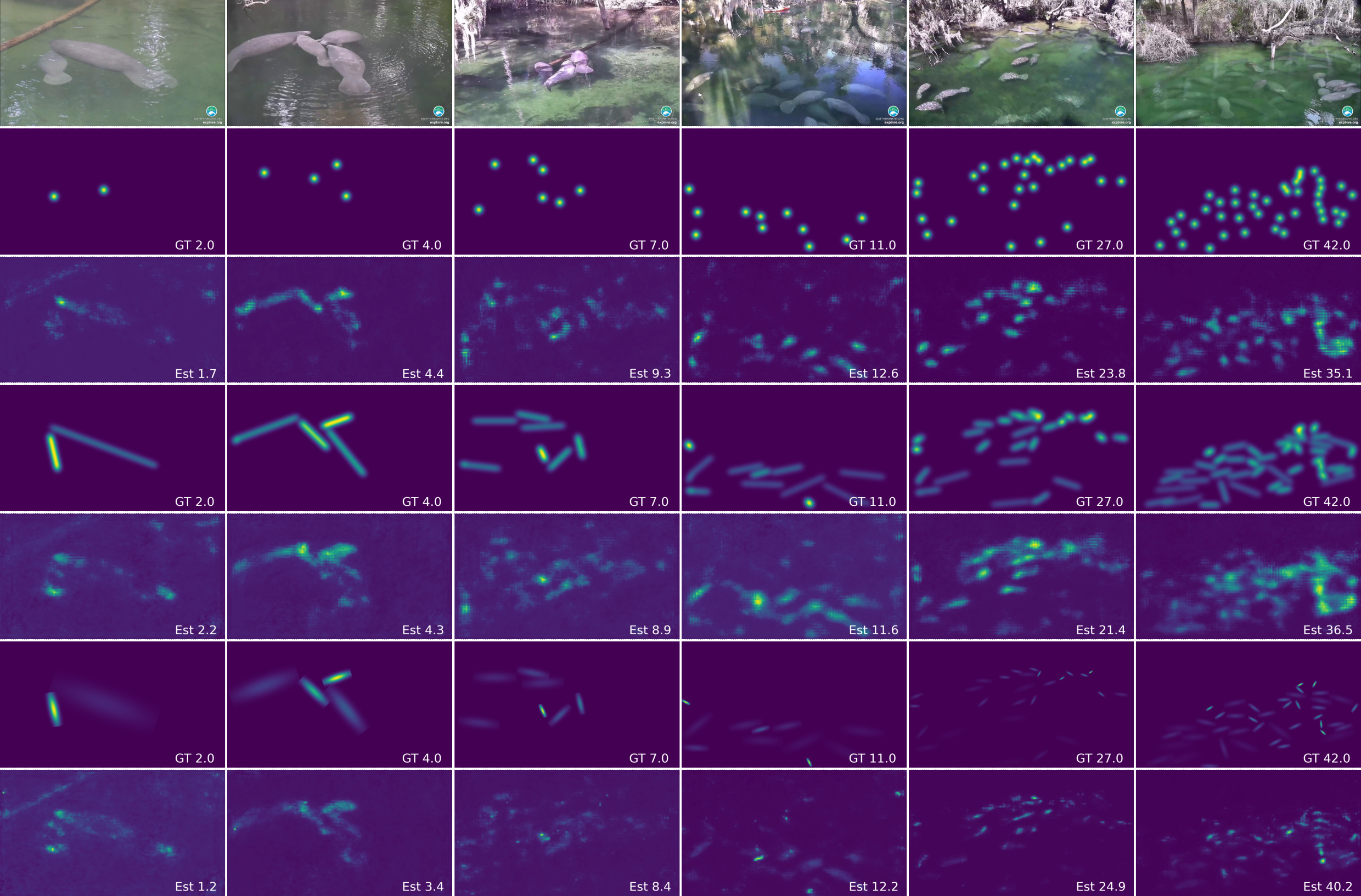Counting Manatee Aggregations using Deep Neural Networks and Anisotropic Gaussian Kernel
Manatees are aquatic mammals with voracious appetites. They rely on sea grass as the main food source, and often spend up to eight hours a day grazing. They move slow and frequently stay in group (i.e. aggregations) in shallow water to search for food, making them vulnerable to environment change and other risks. Accurate counting manatee aggregations within a region is not only biologically meaningful in observing their habit, but also crucial for designing safety rules for human boaters, divers, etc., as well as scheduling nursing, intervention, and other plans. In this paper, we propose a deep learning based crowd counting approach to automatically count number of manatees within a region, by using low quality images as input. Because manatees have unique shape and they often stay in shallow water in groups, water surface reflection, occlusion, camouflage etc. making it difficult to accurately count manatee numbers. To address the challenges, we propose to use Anisotropic Gaussian Kernel (AGK), with tunable rotation and variances, to ensure that density functions can maximally capture shapes of individual manatees in different aggregations. After that, we apply AGK kernel to different types of deep neural networks primarily designed for crowd counting, including VGG, SANet, Congested Scene Recognition network (CSRNet), MARUNet etc. to learn manatee densities and calculate number of manatees in the scene. By using generic low quality images extracted from surveillance videos, our experiment results and comparison show that AGK kernel based manatee counting achieves minimum Mean Absolute Error (MAE) and Root Mean Square Error (RMSE). The proposed method works particularly well for counting manatee aggregations in environments with complex background.
PDF Abstract

